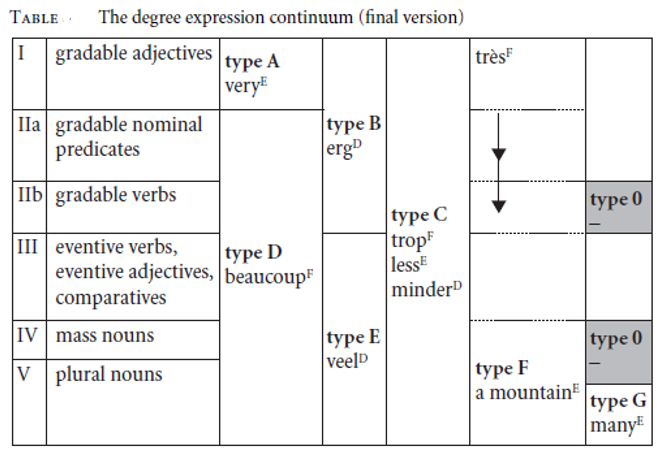

Grammar


Tenses


Present

Present Simple

Present Continuous

Present Perfect

Present Perfect Continuous


Past

Past Continuous

Past Perfect

Past Perfect Continuous

Past Simple


Future

Future Simple

Future Continuous

Future Perfect

Future Perfect Continuous

Passive and Active


Parts Of Speech


Nouns

Countable and uncountable nouns

Verbal nouns

Singular and Plural nouns

Proper nouns

Nouns gender

Nouns definition

Concrete nouns

Abstract nouns

Common nouns

Collective nouns

Definition Of Nouns


Verbs

Stative and dynamic verbs

Finite and nonfinite verbs

To be verbs

Transitive and intransitive verbs

Auxiliary verbs

Modal verbs

Regular and irregular verbs

Action verbs


Adverbs

Relative adverbs

Interrogative adverbs

Adverbs of time

Adverbs of place

Adverbs of reason

Adverbs of quantity

Adverbs of manner

Adverbs of frequency

Adverbs of affirmation


Adjectives

Quantitative adjective

Proper adjective

Possessive adjective

Numeral adjective

Interrogative adjective

Distributive adjective

Descriptive adjective

Demonstrative adjective


Pronouns

Subject pronoun

Relative pronoun

Reflexive pronoun

Reciprocal pronoun

Possessive pronoun

Personal pronoun

Interrogative pronoun

Indefinite pronoun

Emphatic pronoun

Distributive pronoun

Demonstrative pronoun


Pre Position


Preposition by function

Time preposition

Reason preposition

Possession preposition

Place preposition

Phrases preposition

Origin preposition

Measure preposition

Direction preposition

Contrast preposition

Agent preposition


Preposition by construction

Simple preposition

Phrase preposition

Double preposition

Compound preposition


Conjunctions

Subordinating conjunction

Correlative conjunction

Coordinating conjunction

Conjunctive adverbs


Interjections

Express calling interjection


Grammar Rules

Preference

Requests and offers

wishes

Be used to

Some and any

Could have done

Describing people

Giving advices

Possession

Comparative and superlative

Giving Reason

Making Suggestions

Apologizing

Forming questions

Since and for

Directions

Obligation

Adverbials

invitation

Articles

Imaginary condition

Zero conditional

First conditional

Second conditional

Third conditional

Reported speech


Linguistics

Phonetics

Phonology


Semantics


Pragmatics

Linguistics fields

Syntax

Morphology

Semantics

pragmatics

History

Writing

Grammar

Phonetics and Phonology


Reading Comprehension

Elementary

Intermediate

Advanced
Adjectives and degree modification Summary
المؤلف:
JENNY DOETJES
المصدر:
Adjectives and Adverbs: Syntax, Semantics, and Discourse
الجزء والصفحة:
P138-C6
2025-04-20
94
Adjectives and degree modification Summary
Given the discussion so far, we can introduce a completed version of the degree expression continuum in Table 1 It is important to realize that the different types are not meant to be an exhaustive inventory of static types. In many cases individual members may have slightly different properties at the “borders” of their distribution. An example is English much, which usually does not combine with plurals, unlike the other members of type D, and which also combines with certain adjectives. Also, an expression might have the distribution of a type C expression except for the fact that it is incompatible with plurals; this is actually the case for mycket ‘a lot’ in Swedish (Muriel Norde, p.c.).

The semantic properties of the different types can be summarized as follows. There are no obvious meaning differences between types A, C, and D. Type B (erg, horribly) is clearly distinct from a semantic point of view (see also the discussion on Dutch tig above). This seems to be due to the origin of these expressions, which are bleached adverbial modifiers with a high or very high degree interpretation. Similarly, most type F expressions contain a measure word (e.g. a mountain of ) and have a high degree (of quantity) meaning. Type E (e.g.Dutch veel) seems to be in complementary distribution with type B and therefore inherits the meaning restrictions on type B.